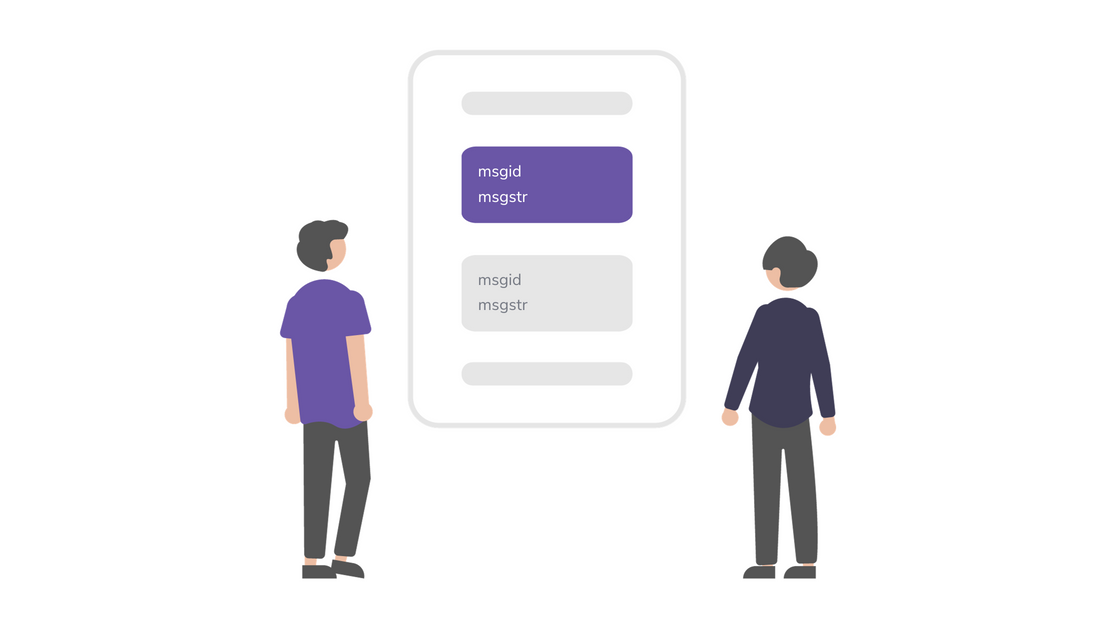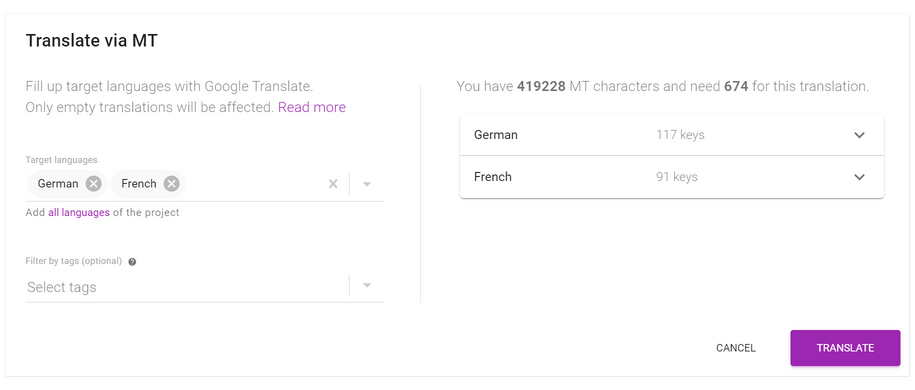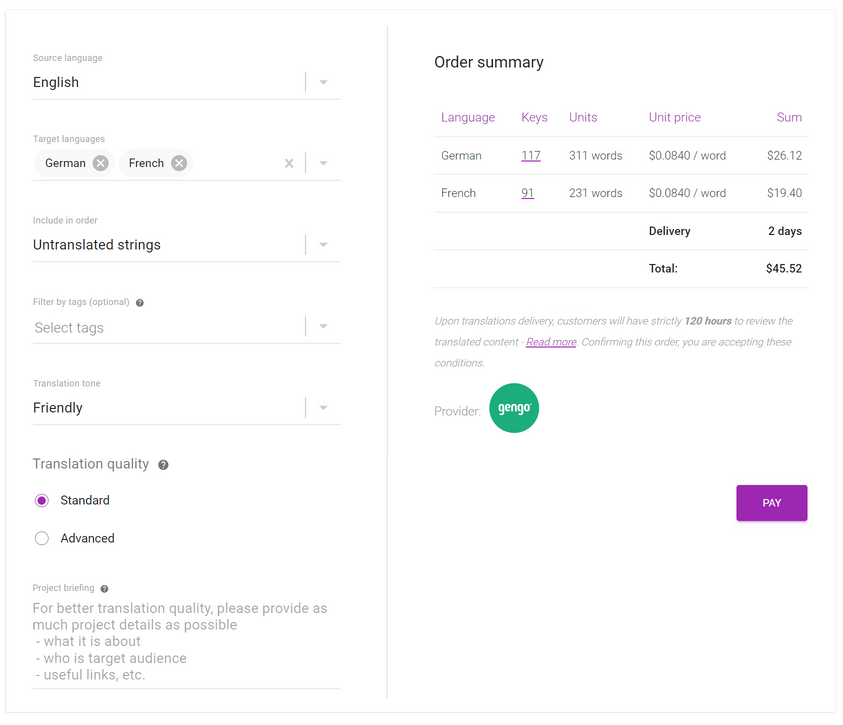Translate PO files with ease

If you're struggling to understand how to translate PO files, this guide can help. In this blog post, we'll dive into two prevalent methods for translating PO files. We'll also highlight common mistakes to avoid and offer tips to streamline and improve your translation process.
Understanding PO, MO, and POT files
Working with PO files does not require knowledge of MO and POT files. However, a basic understanding of these three file formats can be beneficial. Consequently, this understanding can help improve the handling of translations in applications that use PO files.
So, what are the key differences between these data formats? PO, MO, and POT are files used in software localization. While these files serve related purposes, each is used at a distinct stage of the localization process. A POT (Portable Object Template) file, for instance, is created by extracting localization messages from an application's source code via specialized software localization tools. On the other hand, the PO (Portable Object) file is generated by copying and renaming a POT file. It serves to translate localization messages into various languages, with each language requiring a separate PO file. Finally, the MO (Machine Object) file, a binary file created by compiling the PO file, is intended for computer use.
Different approaches to translating PO files
There are two common approaches to translating PO files. The first one involves using any text editor that supports this file format, such as Notepad or Notepad++. The second approach involves using specialized tools designed for working with translation files.
If you're curious about the differences between text editors and specialized translation tools, here's a breakdown. Text editors are versatile tools allowing you to edit various file formats. They are quite generic, meaning they are not specifically optimized for any particular file type or task. For instance, you can use them to translate PO files, but doing so requires a good understanding of the PO file structure and the identification of specific parts that need translation. Generally, text editors are suitable for those with some technical proficiency. In contrast, specialized tools are meticulously crafted for translation tasks, boasting features such as translation memory, glossary management, screenshots, and other functionalities that enhance the translation experience. These tools not only streamline the translation process but also aid in mitigating common errors, ultimately leading to a more efficient and accurate translation workflow.
Tired of manually editing translation files?
Boost your productivity with the right localization tool.
Common mistakes in PO file translation
Here, we'll explore some of the most common errors encountered during PO file translation:
- Invalid file syntax: PO files have a unique structure, which can present editing challenges for non-technical individuals, such as translators. Common syntax errors include missing quotes and typos in keywords that are integral to the PO file format, such as
msgidandmsgstr. - Invalid placeholders: Translating placeholders can result in application errors. It is crucial to differentiate between text requiring translation and text that must remain unchanged.
- Proper handling of plural messages: Languages vary in their plural rules. Using incorrect plural forms in translations can lead to errors in the application.
Utilizing specialized translation tools not only automate PO file generation but also help prevent accidental translation errors. Employing them can effectively mitigate the risks of the errors mentioned above.
Automating the translation of PO files
Automating any job can be beneficial. This is particularly crucial in the context of today's rapidly advancing technological landscape. In the following, we will outline some methods that can help you speed up and automate parts of the translation workflow by employing specialized localization tools.
Delegating translation tasks
Most localization tools support project collaboration. On them, you can set up a localization project, invite team members (managers, developers, and translators), and create translation tasks. This delegation allows you to concentrate on other crucial product aspects while translators work efficiently. These tools, besides facilitating better collaboration, also allow the avoidance of common errors associated with manual editing of translation files, thereby accelerating the development cycle.
Below, you can see an example of an assigned translation task on Localizely.

Utilizing Machine Translation
Localization tools support Machine Translation, thereby enabling fast translation of PO files, often in mere seconds. When Machine Translation is used with a post-translation review, you can have translated PO files ready for use in a very short time.
Below is an example of utilizing Machine Translation on Localizely.

Placing translation orders
For those who prefer professional translation services, placing translation orders can be a great option. This approach allows you to specify texts for translation, target languages, and desired message tones (formal, friendly, etc.). You can then assign these tasks to skilled professionals who can complete them within a set timeframe.
Below is an example of placing a translation order on Localizely.

Conclusion
In this post, we have briefly explained the translation of PO files. Additionally, we've covered two common approaches for working with these files. We also presented methods that can significantly automate and speed up the translation workflow by employing specialized localization tools.
Localizely is a localization platform that simplifies the process of translating PO files. It offers an array of features designed to facilitate software localization tasks. It also includes a free plan that doesn't require a credit card, making it ideal for smaller projects, and it is completely free for open-source projects.
Like this article? Share it!
Aleksa is a Software Engineer at Localizely. Over the past few years, Aleksa has been working in the field of software localization. In his free time, he enjoys playing guitar and writing tech posts.
Enjoying the read?
Subscribe to the Localizely blog newsletter for quality product content in your inbox.
Related
Resources
- What is Localizely?
- Getting started
- Localization workflow
- Translation editor
- Flutter Over-the-Air updates
- Flutter In-Context Editing
- Project branching
- Professional translation services
- Machine translation
- Translation Memory
- Glossary
- Reports and statistics
- Figma integration
- AWS S3 integration
- GitHub integration
- GitLab integration
- Bitbucket integration
- CLI
- Configuration file
- Supported file formats
- Language & Country Codes
- Referral Program
- I18N Questions
- FAQ